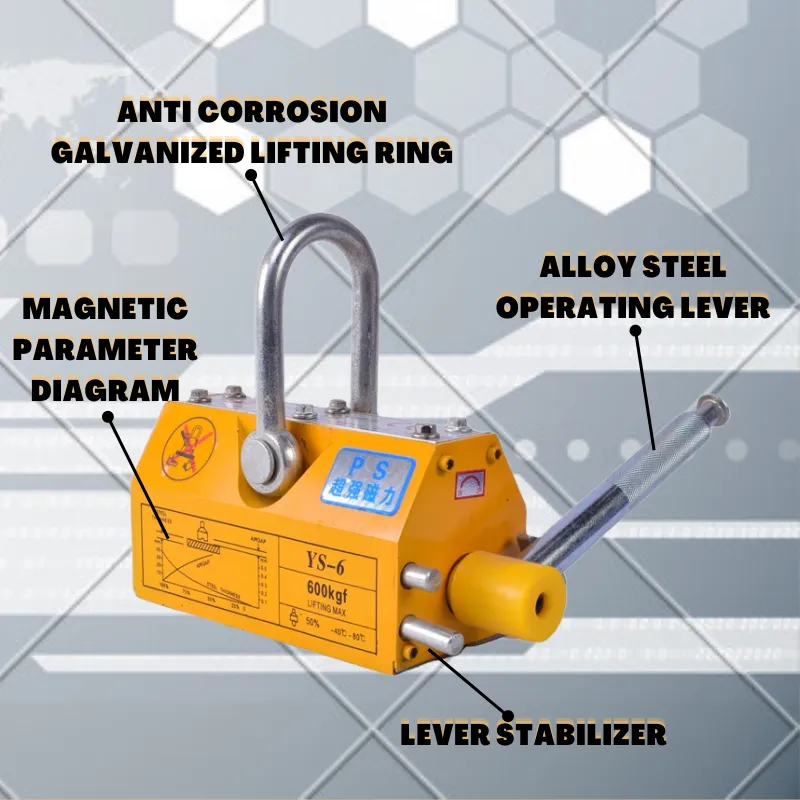gantry crane construction
Gantry Crane Construction An Overview
Gantry cranes are essential equipment in the construction and manufacturing industries, facilitating the movement of heavy materials across various sites. Unlike traditional cranes, which rely on fixed locations, gantry cranes are designed to run on rails, enabling them to traverse a larger area. This versatility makes them invaluable in construction projects, especially where space and mobility are crucial. In this article, we will explore the construction process of gantry cranes, highlighting their design, safety considerations, and applications.
Design and Engineering
The first step in gantry crane construction involves meticulous design and engineering. Engineers must consider numerous factors, including load capacity, span length, height, and the operating environment. Typically, gantry cranes can lift loads ranging from a few tons to several hundred tons, depending on their design. The materials used for construction, such as steel for the framework and high-quality components for mechanical parts, are selected to ensure durability and strength.
Computer-aided design (CAD) software plays a significant role in the design phase. It allows engineers to create precise models of the crane and simulate various operational scenarios to predict performance and safety. This stage also involves calculations for the structural integrity of the crane, ensuring that it can withstand dynamic loads and environmental factors like wind or seismic activity.
Fabrication and Assembly
Once the design is finalized, the fabrication process begins. This typically occurs in a manufacturing facility where steel is cut, welded, and assembled to create the crane components. The main parts of a gantry crane include the main frame, legs, cross beams, and the hoisting mechanism. Quality control measures are critical during this phase to ensure the components meet the required specifications.
After fabrication, the components are transported to the construction site for assembly. Assembly can be done on-site or pre-assembled in sections, depending on the crane size and the logistics of the project. Large cranes, in particular, may require cranes themselves for the lifting and positioning of components during assembly.
Safety Considerations
gantry crane construction

Safety is a paramount concern in gantry crane construction. The crane must be designed with numerous safety features, including overload protection systems, emergency stop mechanisms, and limit switches that prevent the crane from exceeding its operating parameters. Regular maintenance and inspections are also essential to ensure safe operation, both during construction and throughout the crane's lifespan.
Training personnel involved in crane operation is another critical component of safety. Operators must be well-versed in the crane's functionality, potential hazards, and emergency procedures. Following industry standards and regulatory requirements not only enhances safety but also contributes to the overall success of the project.
Applications in Construction
Gantry cranes are widely used in various construction applications, including but not limited to
1. Steel Erection Gantry cranes are ideal for lifting and positioning steel beams and structural components in large construction projects, such as bridges and skyscrapers.
2. Shipping and Logistics At shipping yards, gantry cranes move shipping containers, facilitating efficient loading and unloading.
3. Manufacturing In factories, gantry cranes are used for assembly lines, where heavy machinery and products need to be moved regularly.
4. Marine Operations They are also effective in shipyards for launching and docking vessels, as they can move large components with precision.
In conclusion, gantry crane construction is a complex yet fascinating process that combines engineering, safety, and practical applications in various industries. As construction projects grow in scale and complexity, the demand for efficient and effective lifting solutions like gantry cranes will continue to rise, highlighting their importance in modern construction practices. With advancements in technology and design, we can expect even greater innovations in the future, making gantry cranes safer and more efficient than ever before.
-
Unlock Seamless Relocation with Our Heavy Equipment Moving ExpertiseNewsJun.06,2025
-
Unleash Unrivaled Flexibility with Our Adjustable Gantry CraneNewsJun.06,2025
-
Unleash Heavy-Duty Efficiency with Our Industrial Gantry Crane SolutionsNewsJun.06,2025
-
Revolutionize Steel Handling with Our Magnetic Lifter RangeNewsJun.06,2025
-
Master Equipment Mobility with Premium Machinery Mover SolutionsNewsJun.06,2025
-
Elevate Your Material Handling with Magnetic Lifter TechnologyNewsJun.06,2025
-
YS Permanent Lifting Magnets: The Smarter Way to Handle SteelNewsMay.22,2025
